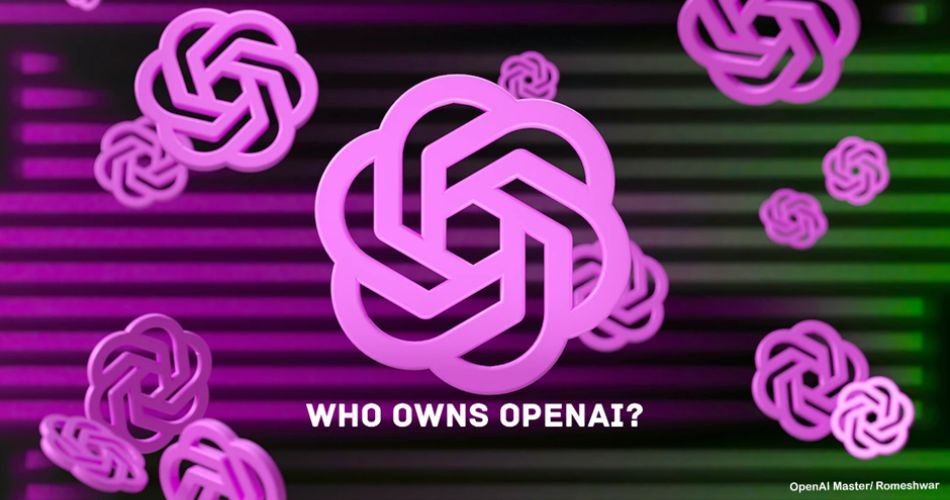OpenAI is a rapidly growing company in Artificial Intelligence. They recently launched ChatGPT, a game-changing product that revolutionised the industry on the internet. With over 100 million users and a portfolio of innovative products like DALLE-2, Whisper, and Playgrounds, OpenAI has helped many users integrate AI into their workspace, boosting productivity. Despite being pioneers in the industry, many people don’t know who owns OpenAI. OpenAI is a well-known organisation that specialises in Artificial Intelligence research and has secured significant investment from industry leader Microsoft. OpenAI collaborates with other industry leaders, including Grammarly, Microsoft, and Snapchat, to implement generative AI into their apps and services.
OpenAI has made significant progress in AI development and is highly praised by many AI experts. However, there is some controversy surrounding OpenAI’s ownership, as it was possessed by the For-Profit entity OpenAI LP, which is now owned by the non-profit foundation OpenAI Inc. The board of directors includes prominent tech industry figures and investors. While it may not be easy to answer definitively, understanding the different factors involved can help make an informed assessment of the company’s future and mission. Here are some things to know about OpenAI’s ownership:
OpenAI Ownership
OpenAI was co-founded in 2015 by tech luminaries Elon Musk, Sam Altman, Greg Brockman, Ilya Sutskever, John Schulman, and Wojciech Zaremba. Their mission is to create artificial general intelligence (AGI) systems that are highly autonomous. In general, AI is smarter than humans, especially in repetitive tasks. However, several co-founders left the company due to conflicts of interest with their own companies, including Elon Musk.
OpenAI was funded by investors including Sam Altman, Greg Brockman, Elon Musk, Jessica Livingston, Peter Thiel, Microsoft, Amazon Web Services, Infosys, and YC Research 2. This has led some people to raise concerns about whether the company is truly committed to its mission of ensuring AI benefits humanity. In addition, it will be driven by commercial interests.
OpenAI Research Laboratory consists of Non-Profit and For-Profit Subsidiary corporations.
In 2019, OpenAI LP began operating as a hybrid non-profit and for-profit entity managed by OpenAI Inc. This was because the company had to pay high salaries and was not making enough revenue to balance out or break even. Additionally, the company needed to increase its financial resources to keep up, pay for servers, and compete against tech giants. These are heavily funded private enterprises in the AI field.
OpenAI LP is managed by OpenAI, Inc. OpenAI LP is a for-profit entity that focuses on developing AI models and research, with its technical staff working on projects. On the other hand, OpenAI Inc. is a non-profit entity that ensures AGI benefits humanity and promotes the AI mission to benefit everyone. The company has no publicly traded stock or private ownership.
We can say that OpenAI is owned by a group of investors including Microsoft, Khosla Ventures, Reid Hoffman, and others. The company has distributed equity and is capped on profit, with profit limited to 100 times on any investment. After Microsoft’s $1 billion investment, they became OpenAI’s exclusive cloud provider.
OpenAI Structure
Exact ownership of OpenAI has not been made public yet since OpenAI is privately owned and there is no single investor or entity that can claim full ownership of OpenAI. The company remains independent and focused on its mission without being influenced by any particular investor. Regarding funding and valuation, the company has raised $11.3 billion in funding over five rounds (source: https://www.crunchbase.com/organisation/openai). So far, the company has balanced being a force for good in the world and serving the public good. However, we need to be cautious about AI tools and wealthy people using them in their interests.
The company’s primary fiduciary duty is to benefit humanity. It ensures that there is no conflict of interest between employees, stakeholders, and humanity’s trust. With this foundation, it secured $1 billion in funding from its co-founders and later received investments from various entities and individuals. OpenAI employees are considered stakeholders, as the company is not owned by any organisation yet. It is part of a for-profit limited partnership that contributes to research and development while staying focused on its core mission and direction.
OpenAI is unlikely to change its ownership structure soon. We should remember that OpenAI has an innovative capped-profit model that drives a commitment to safety. This means that as AI becomes more powerful, the company will redistribute profits from its work to maximise AI technology’s social and economic benefits.
In recent years, the company has gained attention for its development of AGI (Artificial General Intelligence) to ensure that it benefits everyone. As part of its commitment to implementing strict safety-conscious projects, OpenAI has pledged to work with lawmakers. However, the future is still unknown. OpenAI is relatively young compared to its competitors, so its AGI development will progress, but safety, policy, and standard research must be increased. We have yet to see what impact the company will have on the world. However, its success will depend on how it manages its ownership structure and relations with investors.

